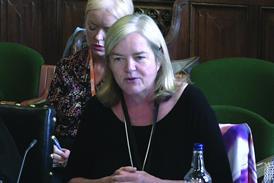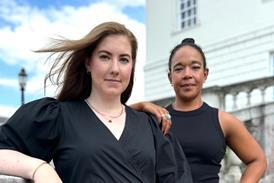Under colonial law, slaves were the property of their owners. Legally, they were chattels, without any of the rights attached to human beings. In the 1783 Zong case, where the captain of a slave ship had thrown ailing slaves overboard to claim on the insurance, the solicitor general argued in an English court that ‘murder’ was an inappropriate description of what had occurred. ‘This is a case of chattels or goods,’ he said.

Yet while, legally, there was no slavery in England, Wales, Scotland or Ireland, the law was unclear about whether a slave became free as soon as they landed in Britain. In 1749 lord chancellor Hardwicke rejected the idea. A ‘Negro slave… is as much property as any other thing’, he stated. But a later lord chancellor, Lord Henley, declared in 1762 that ‘as soon as a man sets foot on English ground he is free… a Negro may maintain an action against his master for ill usage, and may have Habeas Corpus if restrained of his liberty’. In practice many courts ignored the precedents and routinely freed black petitioners.
The 1772 case of Somerset v Stewart is regarded as bringing slavery to an end in Britain. Yet there are later accounts of slaves being openly traded in England, and of runaway slaves being hunted down. The British slave trade was abolished by an act of parliament in 1807, but slavery as an institution continued in America and the West Indies.
Thus the status of slaves who, having been freed in Britain, returned to jurisdictions which still recognised the institution was unclear: did they remain free, or could they be re-enslaved? This was the situation of Grace James who had arrived in England in 1822, accompanying her ‘mistress’ Mrs Allan, and then returned home to Antigua.
As a domestic slave, James occupied a position that was both more privileged and more dangerous than that of other slaves. Domestic slaves were at their owner’s beck and call at any time. They could be punished by whipping or even executed for simple mistakes such as burning the dinner. Sleep was rationed to four or five hours a night and food was restricted. As long as there was a steady supply of cheap labour coming into the colonies in the slave ships, plantation owners might find it easier to work a slave to death and replace them than to provide the basic needs for survival. Women proved to be a better investment as they were hardier than men.
But women slaves also suffered in sex-specific ways: they were used for intensive breeding to ensure a ready supply of new slaves, and they were sexual prey of the men of the house.
Once James set foot on British soil, she became a free woman. In 1823 she returned voluntarily to Antigua with Mrs Allan and continued to live as a free woman. However, after a trifling incident in which she offended Mrs Allan, she was flogged ‘and told she was still a slave’. In 1825 she was seized by a customs officer ‘as forfeited to the King, on suggestion of having been illegally imported in 1823’ – it being illegal to detain a free person in slavery.
Mr Allan claimed for her return, contending that James was his property (his because married women’s property in common law belonged to their husband). The judge of the Vice-Admiralty Court of Antigua agreed, and ordered that she should be returned to the claimant. James appealed to the High Court of Admiralty in London.
As soon as a man sets foot on English ground he is free… a
Negro may maintain an action against his master for ill usage, and may have Habeas Corpus if restrained of his liberty
Lord Henley, 1762
The Slave, Grace was perceived as a test case by abolitionists and slave owners alike. It was widely publicised thanks to the efforts of the strong anti-slavery movement in Britain and the colonies. White Englishwomen were very active in this movement, though not always included in campaigns by the men who thought women’s place was the home and not in public life.
It was obvious that what looked in law like a dispute over forfeiture of property was in fact a claim for a freed slave to remain free. The abolitionists – who included the customs officers who had engineered the slave’s seizure and the colonial officials themselves – expected a sympathetic hearing in London, for the presiding judge, Lord Stowell, was known to be opposed to slavery.
But Stowell disappointed them by ruling that England had no power to alter the laws of other jurisdictions, and thus that James had indeed reverted to enslavement on her return to Antigua. Stowell was conscious of the grievances of the big slave-owners and industrial interests whose financial losses would be huge if and when slavery was abolished in the colonies, and whom the government would have to compensate.
By the time the case returned to court for remedy, however, Stowell had retired and the presiding judge was his successor, Sir Christopher Robinson. As King’s advocate, Sir Christopher had argued Grace James’s case in the hearing before Stowell and was sympathetic to her position. He refused to grant restitution and instead awarded damages to the Allans. Thus James achieved her freedom, in fact if not in law, and the idea that slaves were property and not people was scotched forever.
Rosemary Auchmuty is professor of law at the University of Reading. A longer account of this case appears in Women’s Legal Landmarks (Hart Publishing)






























No comments yet